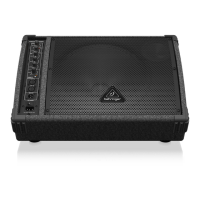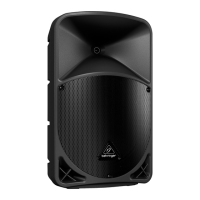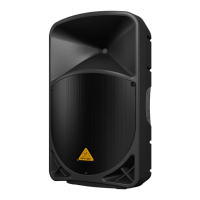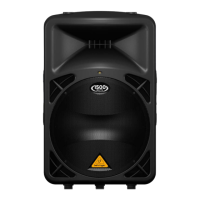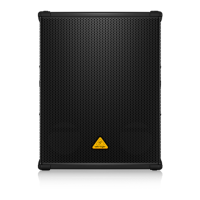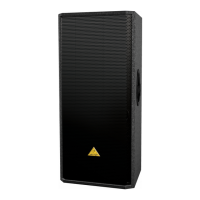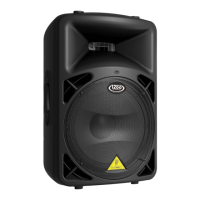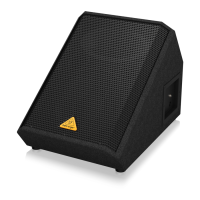EUROLIVE F1220A
Operation 7
Notch lter3.4
A notch lter cancels a narrow frequency band of the signal being
used. Typical interferences, such as feedback and rumble, are
found close to the signal and are therefore easily ltered out.
To pinpoint the interfering frequency, activate the lter and slowly
turn the FREQUENCY control from the left to the right.
We recom mend using our prove n FEEDBACK +
DESTROYER PRO FBQ2496 feedback suppressor for
signals with line level should continuous feedback
problems occur. For line- or microphone-level signals,
we recommend our SHARK DSP110 signal processor.
F1220A with two keyboardsFig. 3.1:
Operation3.
Use the Monitor/Aux output of a mixer to route the audio signal to
the F1220A. When using the monitor mix with more loudspeakers,
route the audio signal of the rst F1220A to the next speaker via
the LINK output. The volume level of each F1220A is adjusted
with the respective LEVEL control.
Connecting signal sources3.1
With an F1220A and a microphone, you are able to master small
PA tasks with minimum effort. The F1220A can also be used
with equipment which include LINE outputs, such as keyboards,
playback devices (for example, CD players) and mixers with AUX
Send outputs.
Connecting a signal source
Turn the LEVEL control fully to the left. =
Connect the signal source to the MIC/LINE input. =
Turn on the F1220A. =
Turn the LEVEL control slowly to the right until you have =
reached the desired volume level. The CLIP LED helps you
in this case. The LED should only light up at signal peaks, but
shouldn’t glow continuously.
Caution: risk of feedback!
Don’t let the microphone’s most sensitive side (front) +
face the loudspeaker. Make sure to keep sufcient
distance between the microphone and the loudspeaker
when using the F1220A.
Connecting multiple F1220A speakers3.2
If you want to use the same monitor mix on bigger stages, simply
increase the number of stage monitors. For example, connect two
F1220A monitors via the LINK output. Either a microphone or line
signal can be routed to the rst F1220A.
Connecting to an active loudspeaker
Connect the LINK output of the rst loudspeaker with the LINE =
input of the second loudspeaker.
Using F1220A as keyboard amplier3.3
Usually guitar and bass guitar players have ampliers which allow
them to be heard when playing on stage—even when a monitor
system is being used. These amps have enough power to be
used on smaller stages. However, it’s quite a different matter for
the keyboardists because they normally won’t use instrument
ampliers.
It is possible to connect a keyboard directly to the F1220A. In case
you want to hook up two keyboards, use a submixer, such as the
MicroMIX MX400, to join both signals and then connect the mixer’s
output to the LINE input of the F1220A. Route the Aux/Monitor
signal coming from the main mixer to the submixer so that you
can hear your band members as well (see g. 3.1).
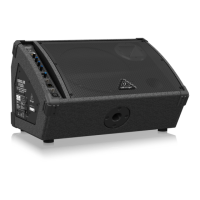
